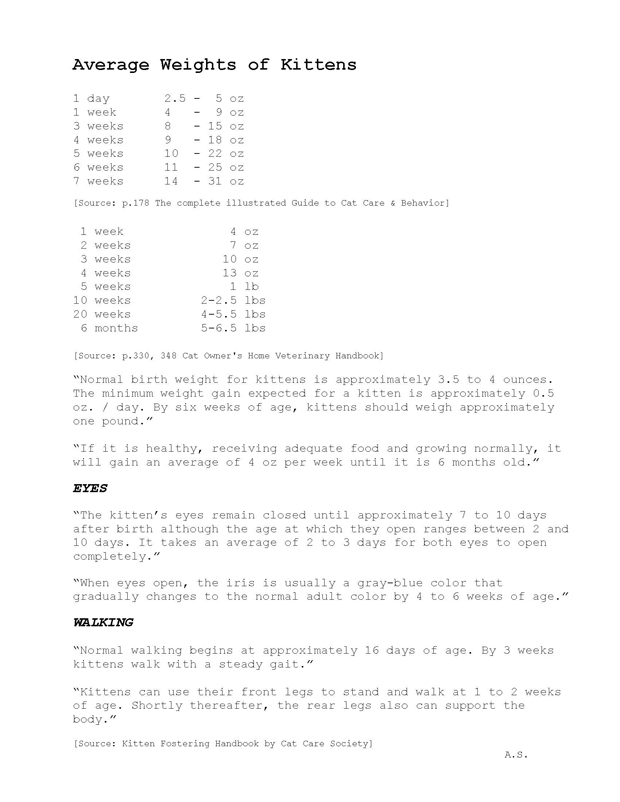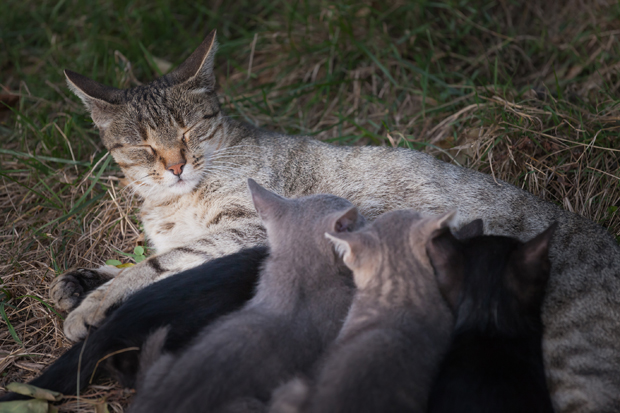This story is part two in a three-part series. The series is dedicated to the sleepless hours that people who bottle-feed baby kittens spend to save all the little lives they can and find them forever homes. The work is so detailed, sometimes heartbreaking, and largely rewarding.
All photos courtesy of Deborah Felin, except where otherwise indicated
Part I of “Cat’s Cradle” provided background information about kitten season and described the need for and the importance of bottle feeders. Part II will focus on the basics and details of caring for newborn kittens: sheltering, feeding, bathing and helping with excreting.”
Deborah Felin was introduced in Part I as a co-founder of Helen Sanders CatPAWS Cat Protection and Welfare Society in Seal Beach. One of the organization’s missions Felin is to pull cats and kittens from shelters to help lower the euthanasia rate and to give as many cats as possible a chance at adoption. This proactively and actively includes orphaned kittens that cannot survive without the substitution of a mother cat’s care and nutrition.
Felin stressed that the care given to any abandoned litter must be immediate and specific.
“Kittens won’t eat on their own until they’re about 4 weeks old,” she said. “If they’re under 4 weeks, the primary considerations are that they must be kept warm, they must be fed at appropriate intervals and amounts, and they must be helped to eliminate because they can’t do that on their own, either. Under two to three weeks old, they’re like little reptiles—they can’t generate their own body heat—they’re dependent on the mother to do that, so you have to keep them warm.”
Some Tools You’ll Need
- A space that’s accessible to the feeder and that can contain the kittens, with no possibility of escape. A spare room, a bathtub or an exercise pen (called an X-pen) will do fine. If other animals live in the home, they must have no access to the kitten area.
- A heating pad
- Clean towels and other bedding
- Formula for feeding
- Solid kitten food for when the kittens are mature enough for it
- Bottles for feeding
- Paper towels for eliminating excrement (Viva brand recommended)
- A box and litter for when they’re mature enough to use them—Jonny Cat clay, not clumping, which can be ingested by very young kittens
- Baby wipes or Dawn dish liquid for bathing. Do not use flea products at any time for kittens under 8 weeks old
$
Warmth and shelter
Felin uses the bathtub in her spare bathroom as an initial nursery for newborns, but any place separate from the rest of the house and any other pets living in it will work. It’s essential that the kittens be prevented from escaping. X-pens do as well as the bathtub; they can be obtained at a pet-supply store or online.

Example of an X-pen. This one is sold at PetSmart.
The kittens must be kept warm—the normal body temperature for cats is between 100 degrees and102.5 degrees. The heating pad should be turned to its lowest temperature—allow for a section where the kitten can crawl off if it’s too hot—and bedding, clean towels or fleece should line the pen or tub. Make sure that they’re not frayed, because kittens can choke on the fibers.
The bedding will need to be changed quite often. When the kittens start eliminating on their own—and we’ll get to that in a minute—it’s everywhere!
Feeding
Setting up the kitty bedroom is nothing compared to the feeding schedule. You have to expect interrupted sleep for a couple of weeks.
“A newborn kitten—I mean a couple of days old—has to be fed every two hours, which can be a real bitch, actually,” Felin said. “You have to be up to this. If it’s only you, you just don’t sleep. By the time the kitten’s a couple of weeks old, though, it gets easier.”
The schedule and form of food depends on each kitten’s age and development. Felin says that there are certain developmental clues to figure how many weeks old a kitten is—the shape of the ears and condition of the eyes, for example. Alley Cat Allies offers a helpful chart; the kittens’ weight generally determines how many weeks old a cat is (see below). Kittens should be weighed every day and should gain weight every day as well.

Kitten weight/age chart. Alley Cat Allies.
Straight cow’s milk is not a substitute for mother’s milk, so you’ll need a specially mixed formula, which is sold at pet-supply stores and online. Felin cites KMR (Kitten Milk Replacement) made by PetAg as the most common; it’s available in liquid and powder in several sizes. The feeding schedule is as follows:
- Up to a week old: Feed every two to three hours.
- One to two weeks old: Feed every three to four hours.
- Between two and four weeks old: Feed every five or six hours. You can go as much as six for the older end of the range if you need more uninterrupted sleep, which by this point you undoubtedly will.
- At four weeks old, you can introduce soft or canned food mixed with formula. Felin prefers Royal Canin’s Babycat formula, which comes canned as a smooth pâté and which dissolves easily to make a gruel-like mush.
$TThe fourth-week feeding is fairly arbitrary and depends on the cat’s development. Felin said that some cats go facedown into the canned-food/formula mixture and others will still need the bottle for another week or even more. As the kittens grow, start increasing the solidity of the food, and when you think that they’re ready for it, take the bottle away and leave the kitten at the dish to see what happens.
“You can put a little chunk of the canned food in their little-bitty mouths and leave it there—they may get the taste for it,” Felin suggested.

Feral cat rescuer Antje Hunt with Long Beach Spay & Neuter suggested this recipe for kitten formula for the feline foodies:
The Art and Science of Bottle Feeding
The actual feeding technique is critical to the survival of the kitten, particularly the position of the bottle.
“You don’t ever want to feed them on their back—they’ll aspirate and get pneumonia, which can be fatal quickly,” Felin said.

Nursing kittens lie prone when feeding from their mother. A bottle feeder should imitate this position. Dreamstime stock photo.
The head should be raised slightly, like this.
Never, ever like this. The kitten will aspirate and die.
The nipple of the bottle must be prepared first. Felin advises cutting a small cross in it that’s small enough to prevent the formula or chunks of food from dripping out too fast and large enough for the kitten not to struggle.
Example of a properly prepared nipple
Then, it’s dinnertime.
“Urp
- Sit on a chair with thigh elevated, flop over the kitten tummy down, and insert the bottle. If the kitten is squirmy or frantic, immobilize its head as gently as you can and insert the bottle mid-yowl.
- Once the bottle’s in, don’t squeeze—apply the smallest bit of pressure you can.
- The kitten will suck away at the food for as long as it wants; hopefully, when it’s done, it will start to pull away.
- When the kitten’s finished eating, burp it the way you would a baby to get the air out.
- Repeat with the rest of the kittens.
Toidy Time
You fed, you burped, and now the kittens have to go to the bathroom. Newborns don’t have the muscle or nerve development to be able to do this on their own, so you have to do it for them, and believe me, if you’ve agreed to wake up every two hours for feeding, this’ll be nothing.
Take tissue paper or a soft, cloth-like paper towel like Viva, and wet it with a little warm water. Then, you’ve got to do what Mama Cat does while she’s licking them: stimulate the genital area and rectum by elevating the butt and firmly but gently massaging the area. There won’t be a lot of hard waste at first because the kittens won’t be generating any solids at this stage of their life. Afterward, put the little buggers to bed. A radio in the room provides some nice background noise. If there’s only one kitten, put a stuffed animal in the bed with it.
Gently wipe the kitten’s little tuches with a soft tissue or paper towel.
Occasionally, you may have to do this before feeding, depending on how long it’s been since they’ve eliminated. Whenever you do it, repeat with however many kitties you have, every two hours. It’s pretty messy, Felin said, but kittens instinctively use the box pretty quickly, generally at three weeks old. She hailed that as the “best day in a feeder’s life.”
When the kittens use the box, keep an eye on them to monitor for problems such as diarrhea or straining and going in and out. The latter can indicate a urinary tract infection, which must be treated immediately.
Bathing
Newborns will get mucky. You can gently bathe them with a mixture of baby wash and Dawn. Do not immerse the kitten, and be sure to dry and warm them thoroughly. Baby wipes are great, too.
Do not use flea meds or flea baths on kittens under 8 weeks old, but be sure to comb them thoroughly. Fleas bear diseases and also cause flea anemia.
In Part 3, this information will be reviewed via two exemplary videos that Felin created. Part 3 will also express a few cold, hard facts about bottle-fed kittens. If you’re still interested, stay tuned.

